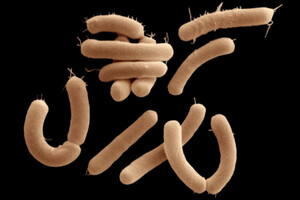Organisms are aware of their environment, even when they are physically “dead”.

Scientists from the University of California in San Diego discovered unexpected activity of bacterial spores. According to the researchers, they “monitor” the environment even when they are “physically dead”, reports Science Alert.
Bacteria use an accumulated supply of charged particles instead of their usual “fuel”. This allows them to respond to the slightest changes in nutrient levels to determine the best time to wake up. This discovery challenges existing ideas about how diseases spread, and how life can continue to exist in the extreme conditions of the Earth and its boundaries.
Also read: Scientists managed to find out how bacteria move
“This work changes our understanding of spores, which were considered inert objects. We show that cells in deep sleep have the ability to process information. We found that spores can release stored electrochemical potential energy to perform calculations about the environment without the need for metabolic activity,” said lead author of the study Gürol Suel.
According to him, if scientists manage to find life on Mars or Venus, it will most likely be in an inert state. But the discovery suggests that a life form that appears to be completely inert “can still think about next steps.”
Bacteria are usually quite durable. One of their survival tactics is turning into arguments. They can be in this dehydrated, dormant state for hundreds of years. But still, this is not a deep sleep. Physiologically, they are dead, they do not undergo metabolism. But somehow they know when to wake up.
For example, anthrax spores, which are caused by the bacteria Bacillus anthracis, can survive long periods without water or nutrients in a mailbox. But within a few moments of exposure to appropriate conditions, they are able to rehydrate and restore their metabolism, which allows them to become infectious again.
In the course of the study, scientists observed thousands of Bacillus subtilis spores, which are considered harmless to humans and can survive in stay in space. They measured whether the spores responded to a brief pulse of nutrients that was insufficient to cause them to wake up.
Two or three pulses were not enough to bring the bacteria back to life. But later there was a cumulative effect: the microbes somehow managed to keep track and wake up again after the required number of signals.
The scientists measured the activity of the spores in response to the pulses and found that they used the stored energy in the form of potassium ions (K+ ) at each entry. Using a mathematical model, the scientists found that each signal triggered the release of potassium ions, and over time the potassium ions became strong enough to wake up the bacteria. They called this the “integrate-and-shoot” model of activation.
Related video
The mechanism is known as a cumulative signal processing strategy, which prevents the bacteria from waking up too early if environmental conditions are unfavorable. Scientists note that this is similar to how neurons in the human brain work. But unlike neurons, which are incredibly energy-intensive cells, the spores could do this without any metabolic energy at all, just by storing up potassium.




